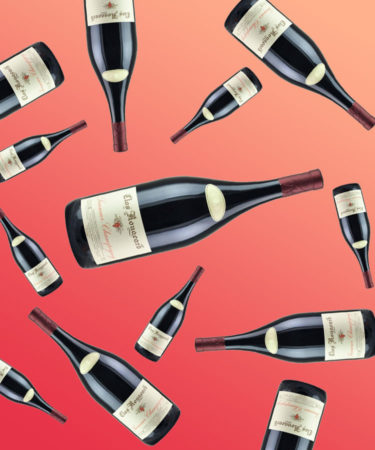Clos Rougeard is one of France’s most coveted wine labels, but, unlike other estates of similar stature, it is not based in Burgundy, Bordeaux, or even Champagne. Its wines hail from the heart of the Loire Valley, a region whose reds have become the darling of international wine enthusiasts.
From minute yields, to gigantic price tags, here are nine things you should know about Clos Rougeard.
AN ICONIC RED IN A SEA OF WHITE
In terms of production volume, the Loire Valley is France’s third-largest wine region after Bordeaux and the Rhône. The region is arguably best known for its whites, including Muscadet, Sauvignon Blancs from Sancerre and Pouilly Fumé, and Chenin Blancs vinified to a range of styles and sweetnesses. In the heart of the valley, there’s a lesser-known red wine appellation, Saumur-Champigny, producing some of the world’s finest Cabernet Franc wines. Once a well-kept secret in France, these wines are now highly coveted worldwide — and none more than those from Clos Rougeard.
… BUT NOT ALL ITS WINES ARE RED
Clos Rougeard has four regular releases: three 100 percent Cabernet Franc red wines and one 100 percent Chenin Blanc white.
ALL COME FROM SMALL PARCELS
The leading red cuvée, Le Bourg, comes from a 2.5-acre plot of vines aged between 75 and 95 years old. Les Poyeux includes Cabernet Franc grapes from a 7-acre plot of 40- to 70-year-old vines, and the final red, Saumur-Champigny, sources grapes from 10 plots across three communes. Clos Rougeard’s only white wine, Brézé, is farmed from a 2.5-acre plot of 100-plus-year-old Chenin Blanc vines.
In select vintages, the estate also produces a tiny amount of sweet Chenin Blanc, called Coteaux de Saumur.
GOOD LUCK GETTING A BOTTLE
The blend of high-quality winemaking and extremely limited production — under 3,000 cases annually — makes getting your hands on a bottle of Clos Rougeard extremely tricky. All the estate’s wine is sold by allocation only, and the majority remains in France. Once you do find a bottle, prices average around $239 for the Saumur-Champigny and regularly exceed $500 for Le Bourg.
VINEYARD YIELDS MATTER
Clos Rougeard’s limited production is the result of low-density vineyard plantings (around 2,400 vines per acre) with vines pruned to a maximum of six bunches per plant. This combination yields highly concentrated grapes, capable of producing age-worthy wines.
LESS IS MORE AT CLOS ROUGEARD
The low-yielding vineyards at Clos Rougeard are organically farmed, without using modern fertilizers and pesticides. Fermentation features natural yeasts, and there’s no fining or filtration prior to bottling.
WELL, UNLESS YOU’RE TALKING ABOUT BARREL AGING
Clos Rougeard’s oak aging program is vital to the estate’s signature style. Each wine spends between 18 and 24 months in barrel. Le Bourg rests in new French oak, and Les Poyeux and Saumur-Champigny are aged in used barrels, sourced from top Bordeaux wineries. The process creates a bold style different from many of the simpler reds in the region.
CLOS ROUGEARD HAS A MULTI-GENERATIONAL FAMILY HISTORY
In 1969, brothers Nady and Charly Foucault took control of the Clos Rougeard estate, becoming the eighth generation of Foucaults to make wine there. The brothers are credited with bringing international recognition to the region, and inspiring a younger generation of local winemakers. After Charly, who headed both vineyard and winemaking operations, passed away in December 2015, his son, Antoine Foucault, took over winemaking duties.
NOBODY WINS WHEN THE FAMILY FEUDS
Rumors of a family rift and plans to sell the estate followed Antoine’s succession, but Antoine reportedly wanted to ensure the family legacy remained at Clos Rougeard for a 10th generation and beyond. Ultimately, his dream didn’t come true. In June 2017, the estate was sold to the Bouygues brothers, members of one of France’s richest families, and the owners of Château Montrose in Bordeaux.
